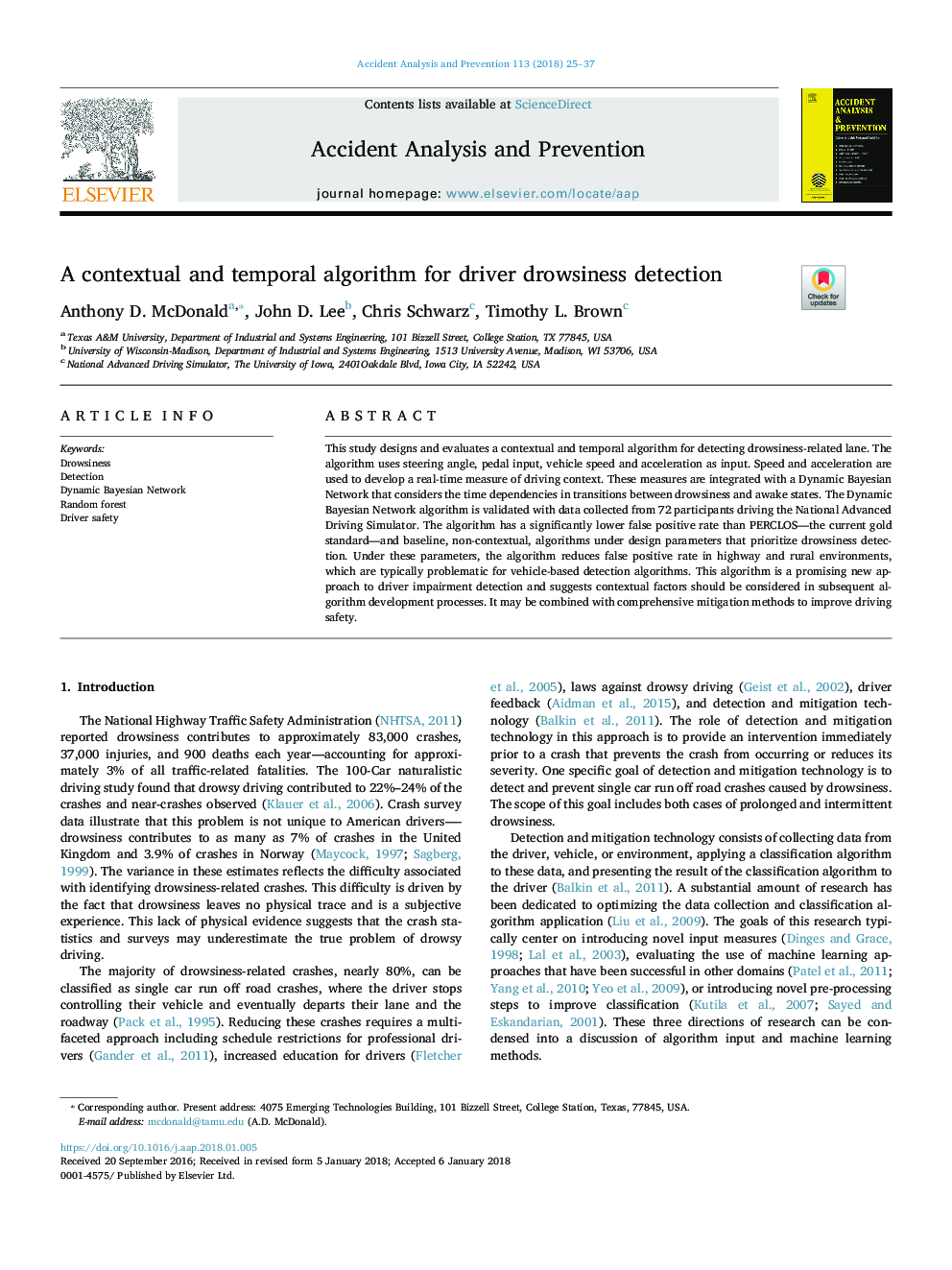| Article ID | Journal | Published Year | Pages | File Type |
|---|---|---|---|---|
| 6965192 | Accident Analysis & Prevention | 2018 | 13 Pages |
Abstract
This study designs and evaluates a contextual and temporal algorithm for detecting drowsiness-related lane. The algorithm uses steering angle, pedal input, vehicle speed and acceleration as input. Speed and acceleration are used to develop a real-time measure of driving context. These measures are integrated with a Dynamic Bayesian Network that considers the time dependencies in transitions between drowsiness and awake states. The Dynamic Bayesian Network algorithm is validated with data collected from 72 participants driving the National Advanced Driving Simulator. The algorithm has a significantly lower false positive rate than PERCLOS-the current gold standard-and baseline, non-contextual, algorithms under design parameters that prioritize drowsiness detection. Under these parameters, the algorithm reduces false positive rate in highway and rural environments, which are typically problematic for vehicle-based detection algorithms. This algorithm is a promising new approach to driver impairment detection and suggests contextual factors should be considered in subsequent algorithm development processes. It may be combined with comprehensive mitigation methods to improve driving safety.
Related Topics
Physical Sciences and Engineering
Chemical Engineering
Chemical Health and Safety
Authors
Anthony D. McDonald, John D. Lee, Chris Schwarz, Timothy L. Brown,
